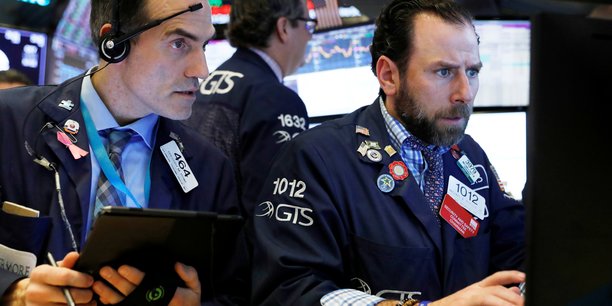On Monday, March 9, 2020, after the failure of the OPEC’s exceptional summit to stem the collapse in oil prices, all financial centres are failing, posting record lows. Paris recorded its biggest fall since 2008 losing 8.4%, Frankfurt recorded a 7.9% decline – the highest since 11 September 2001 – and Milan tumbled 11.2% in one day.
Since then, stock indexes have been accumulating “lows”. Was such a fall in prices predictable? How to explain it? Two factors are at work, one predictable, the other not.
An expected return to basics
The downward correction in financial markets was to be expected, regardless of the current health crisis. Of course, its magnitude was not, but the fall is not, in itself, a surprise. The same is true of the collapse in the price of oil, which is seen as a barometer of the economy.
To understand the current situation, let’s briefly return to the context that is, at the end of 2019, close to a certain euphoria or financial bubble. The year 2019 was marked by exceptional performance in the markets: 32% for the Nasdaq, 29% for the S-P500, and 26% for the CAC 40.
Did this dynamic at work in 2019 reflect the economic situation? In other words, were such performance “normal” in view of economic conditions?
Changes in major stock indexes since May 2019. Stock exchange zone
These questions are all the more acute because the context that prevailed last year was very uncertain: a latent economic slowdown, the erosion of growth in emerging countries, the movement of “yellow vests” in France, questions about the future of the European Union following Brexit, fears about the sustainability of the euro area, trade tensions between China and the United States , the beginning of new geopolitical tensions between the United States and Iran…; all of these factors contribute to economic uncertainty.
The accommodative nature of central bank monetary policies reinforces this, in the sense that such policies are generally observed in times of economic recession.
In total, 2019 appears to be a year when stock prices were disconnected from economic fundamentals. In other words, the financial markets and the real economy were not in phase and if a situation is to be considered “abnormal”, it is this one.
This brief look back at 2019 allows us to capture and understand the movements that are currently taking place in international financial markets. Today, we are seeing a correction, that is, a return to economic fundamentals.
Regardless of the uncertainty associated with the health crisis itself, economic uncertainty is still very high. To cite just a few examples, despite a slight lull, the China-U.S. trade dispute remains relevant, as are geopolitical tensions at the global level – in particular, around oil. Similarly, questions about the consequences of Brexit remain, the migration crisis continues to be topical, etc.
This major economic uncertainty is manifested and is illustrated by very high volatility in the financial markets that make the “yoyo” and thus return to economic fundamentals.
In this regard, it should not be forgotten that the share price observed in financial markets is supposed to reflect the fundamental value, that is, “real,” defined as the discounted sum of dividend expectations paid by companies. As the health of companies is undermined, expectations are at half-mast, and the downward correction in the markets is therefore not surprising.
An unforeseen factor: coronavirus
It is in this already fragile economic context that the pandemic has been added. The spread of coronavirus continues to hamper international economic activity. China was the first to see its economy slow down, with major impacts on global economic activity as a whole.
Multiple companies around the world are dependent on China, their activity is directly impacted and the global economic outlook has been revised down sharply. Italy was then confined, and then, little by little, all the countries of the world. The economic impact is and will be very severe and the spectre of a global recession is now clearly a reality.
The fall in stock prices and the extreme volatility we see in the markets today reflect this very uncertain economic situation. Economic uncertainty is greatly amplified by the health crisis itself and the many legitimate concerns it raises. It is also reinforced by the fall in oil prices; the latter, which made the markets aware of the seriousness of the economic situation that was to come.
While coronavirus first impacted the real world, with the slowdown in global economic activity, and then affected financial markets, the financial crisis was latent. The pandemic has accelerated its onset.
Moreover, a boomerang effect is to be expected, with the risk of entering a “vicious circle”. The very strong economic slowdown we are witnessing is causing many investors to sell their shares. By doing so, they fuel and strengthen the decline in the markets, again creating repercussions on the real economy by further weakening businesses. These phenomena, well known in finance, refer to what economists call self-fulfilling prophecies.
The economic recession is inevitable and the question of the severity of the financial crisis is obviously related to the risk of default on corporate debt. The major crisis will be even more disastrous if banks suspend their loans to businesses and stop interbank lending.
Bankruptcies, and consequently the associated massive job losses, will then be inevitable with a chain of defects that can produce systemic risk. While it is obviously far too early to know how long and the extent of the expected recession will be, all means must be used to boost business growth and investment, both from monetary authorities and from government measures.
![]() _______
_______



